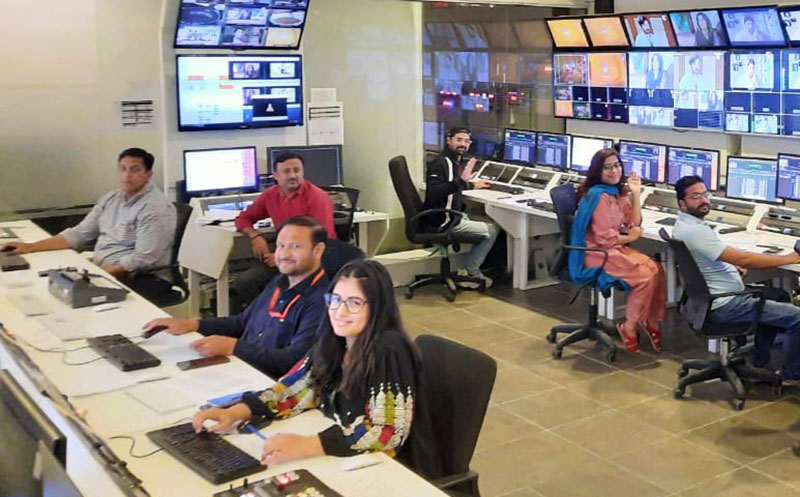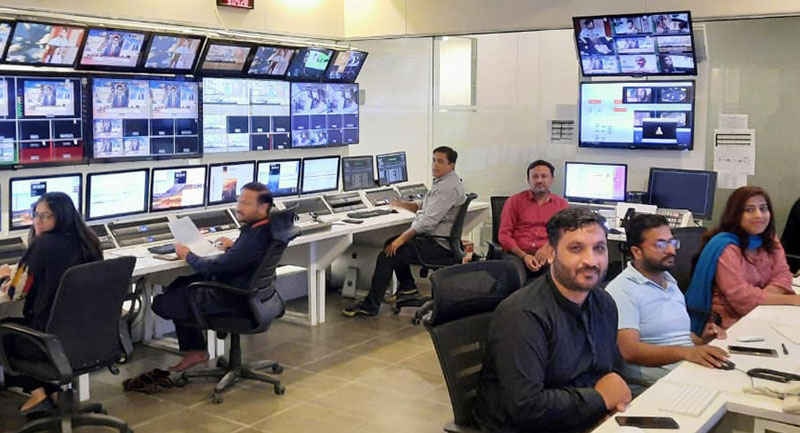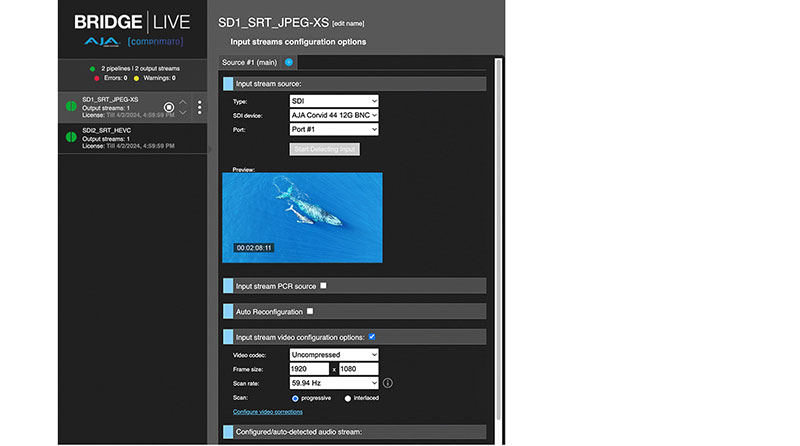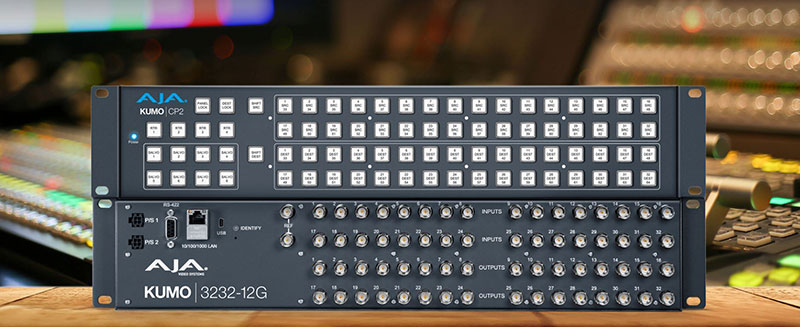Hum Network in Pakistan achieves low-latency, secure transmission over public networks – without a CDN – using reliable, cost-effective AJA IP encoders supporting modern protocols.

Hum Network Ltd is an Urdu-language entertainment and news network that broadcasts a range of programming to Pakistanis, Indians and other South Asians around the world, around the clock.
Headquartered in Islamabad, Pakistan, with further facilities in Karachi, Hum Network employs more than 1,500 team members and is proud to be the first publicly listed Pakistani television network on the Pakistan Stock Exchange.
Muhammad Tariq, a broadcast engineer, is Assistant Vice President at Hum Network. He talked about his day to day work keeping their broadcast services operating smoothly and, in particular, working toward their primary goal over the past year of achieving secure, low latency channel delivery over public networks.
“I mainly work in the MCR (master control room), PCR (production control room) and studios, overseeing broadcast IT, digital archive, satellite uplink/downlink, live transmission and remote station connectivity,” he said. “We distribute Hum’s satellite and IP-based channels via IPTV, using protocols like HLS, SRT and so on.” A typical workday involves managing and coordinating all of these areas.

Major Projects – Local to Global Scale
Over the past year, Hum has undertaken three major projects. One of the most important projects to date involved the relocation of the network’s entire office, including technical facilities, from one city to another.
“The transition had to occur without a single black frame or error in national and international transmissions,” said Muhammed. “It encompassed multiple operations, such as MCR (master control room), CAR (central apparatus room), studio and archive, as well as our live ingest, MCPC (multiple channels per carrier network technology) and IP channel infrastructure.
The second project orchestrated content channel delivery via an IP-based system to three European regions, which each required separate commercial break triggers using SCTE104/35 conversion.

Finally, they also addressed the task of establishing direct point-to-point connections to deliver content channels across various regions. Before, channel delivery relied on a CDN that incurred distribution fees. Muhammed said, “To achieve the desired result – low-latency, secure transmission over public networks – we needed reliable, cost-effective IP encoders, supporting modern protocols.”
Production to Playout Pipeline
Muhammed also spoke in more general terms about Hum’s production-to-playout pipeline. “We’ve equipped our studios and PCRs with broadcast cameras, production switchers, a virtual set and recording devices, all configured to record Apple ProRes HQ/LT format,” he said. “We also operate post production facilities with multiple editing, real-time graphics, motion graphics and title systems. For MCR playout, we have Tools on Air Apple-based systems with multiple MCR switchers, which can all be managed directly through our Promise NAS system.”
4K content is handled differently. Acquired at the Karachi facilities via HDD (hard disk drives) or our LAN (local area network) using an FTP client, the material is uploaded to a server, routed, then delivered via MultiNet at 50 Mbps CIR (committed information rate) or via PTCL (Pakstan’s telecom) at 100 Mbps to the Islamabad facility.


There, it’s received via MultiNet at 50 Mbps CIR or NAYATEL internet services at 100 Mbps CIR and routed to another FTP server. Content is then encoded/decoded/transcoded by an AJA BRIDGE LIVE that feeds their direct-attached storage (DAS) controller. That content is then encoded/decoded/transcoded by another BRIDGE LIVE unit and is available to Hum’s creative and international editing departments, interactive department and MCR playout systems, where further BRIDGE LIVE units are set up.
Beyond CDNs
The decision to move away from a CDN meant investing in their own encoders. They chose BRIDGE LIVE, as it is equipped with the up to date protocols they wanted to use, is very cost-efficient and has been able to maintain the low latency and security needed for channel delivery over public networks.
“The multichannel SRT with SCTE-35/104 support in AJA BRIDGE LIVE, for instance, plays a central role in our broadcasting operations,” Muhammed said. “It means we can deliver a number of channels economically over the same network infrastructure, trigger commercial breaks very precisely and ensure the content complies with industry standards. These capabilities help us improve the viewer experience by creating smooth transitions between programming and commercials.”

The fact that Hum was already using AJA devices also played a role in the decision to invest in BRIDGE LIVE. They find the products are very reliable and have helped them reduce the risk of downtime and the associated costs. For example, AJA KUMO SDI routers help prevent signal disruptions during live broadcasts, which can be costly to rectify, and the AJA Mini-Converters have made format conversion more efficient by avoiding the need for multiple pieces of equipment.
“These products simplify our workflow,” Muhammed said. “AJA's Ki Pro recorders also make recording easy and ultimately save time in post. AJA’s synergy of reliability, performance and versatility consistently contributes to efficiency and cost-effectiveness across our facility’s operations.” www.aja.com




